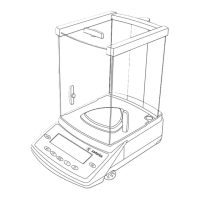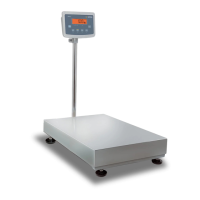9
Calibration/Adjustment*
Always calibrate/adjust the balance/scale after setting it up in a new location.
Available Features
Calibration/adjustment can only be performed when
– there is no load on the balance/scale,
– the balance/scale is tared,
– the internal signal is stable.
If these conditions are not met, an error message is displayed.
The weight required for calibration/adjustment is displayed (see “Accessories” for
calibration weights; for model GC503 see “Equipment Supplied”).
On Basic
lite
balances, calibration/adjustment can be performed with any of three weight
units: g, kg**, or lb (menu code 1. 4. x)
Factory setting: Grams (menu code 1. 4. 1)
Example
Calibrate the balance/scale
Menu code settings: Factory-set codes
Step Key (or instruction) Display/Printout
1. Turn on the balance/scale e
2. Tare the balance/scale t 0.0 g
3. Begin calibration t >2 sec. + 1000.0
Calibration weight is displayed
without weight unit (here: 1000 g)
4. Place the indicated calibration 1000.0
weight on the balance/scale
After calibration, the calibration + 1000.0 g
weight is displayed with wt. unit
5. Remove the calibration weight 0.0 g
* = “Calibration” technically means to determine the difference between the balance/scale readout
and the actual weight on the pan to determine the accuracy.
Adjustment means to bring a balance/scale into the state of accuracy required for its use.
Therefore, “calibration,” as used in this manual, actually means “adjustment.”
**= not on models with a readability of 0.1 mg
